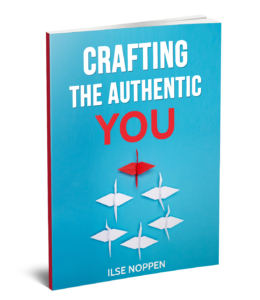
When David accepted his new position he knew he was facing a learning curve, naturally. One key objective was to develop a better connection with his managers and their teams. Two months into his new role came the lockdown, adding to his challenge. His reaction was to focus on the doing. Not the being.
In his one-to-one meetings, he goes straight to the ‘to do’s’: how are the projects going? what are the issues? These are the solutions. Problem-solution. Problem-solution. Simple. Moving ahead. Focusing on results.
But missing out on a lot.
David’s wake up call came when he felt one of his managers, Marc, didn’t seem motivated. During our session he realised he didn’t really know how his managers are actually doing. How are they feeling? How are they living this Covid period? How is this WFH policy working for them? How do they recharge their batteries?
The topics had surely come up, but he had brushed over them. He didn’t have much of a clue of how his team really was, despite being an open and relatable person.
He decided to find out more about how Marc was feeling in his next one-to-one meeting. Asking more questions, letting Marc talk. He learned Marc was going through a tough time with this Covid situation; he needed to visit sites, which meant potentially exposing himself to Covid, and therefore possibly exposing his ageing mother which worried him a lot. And, like many others, he was missing the interaction with colleagues.
Feeling great about having understood what was at play here, David got back into his usual problem-solution-mode. Which Marc didn’t really bite into. Why? Because David didn’t really connect to Marc.
Here are 3 tips to how you can create better connections with your team members and colleagues even online;
- Be like an explorer
How often are you asked ‘How are you?’ and you feel the person who asked the question has already mentally moved on? Often – right?
This is an invitation to ask a question and listen carefully. Approach your team member with deep curiosity, be willing to discover without any fear or agenda regarding what will be discovered. Be like a child walking on the beach turning up a rock to see what’s underneath it. Be truly interested and curious about this person. Do not assume you know the answer even if you know the person.
This is especially important in today’s world. The pandemic is dragging on, and as it does, it weighs increasingly more. Everybody’s situation is different. I am living it differently from you. My difficulty is different from yours. Let’s not assume. Instead, let’s ask with an open mind, willing to give space to feelings.
Here is a challenge for you: at every meeting aim at learning more about the other person, whether it is something about their professional or personal life. It can be about what they did during the weekend, how their family is, how they recharge their batteries, what they are excited about doing this week, what they would like to celebrate, what have they been reading/listening/watching lately?
Whatever the question, listen, truly listen to the answer, get curious and engage.
- Listen to the energy of the person
The non-verbal language gives clues on how someone is feeling – the rubbing of hands, playing nervously with a pen, shaking the legs, how they are sitting, bent over or straight etc. In an online meeting you’ll be limited to what you see on the screen. Unfortunately. However, there is a valuable alternative.
Tuning into the other person’s energy can give you great information. Energy is not just a physical thing – you also hear it. Listen to the voice of the person you are talking to: what is the undertone? Is it peppy? Excited? Angry? Tired? Frustrated? Bored? Interested?
Sense what is in the voice and be open to receive it. Have you had the situation where you are told ‘X is going through a tough time because of XYZ’ and you think: ‘Yes, I noticed she didn’t sound her usual self.’ But it was too late – you had missed the clue.
Tune into the energy of the person and name it. ‘Wow – you are excited about this, aren’t you?’ ‘This seems to have been a difficult meeting with this client.’ ‘You seem to have low energy today…’ ‘You seem to find it difficult to accept this – is that possible?’
Use your observation to open the conversation and deepen it with follow up questions.These are opportunities to strengthen your relations with your team and peers.
- Tame your Advice Monster
It is so ingrained in us: when we hear about a problem, we want to ‘help’ solving it. And preferably by offering the solution ourselves of course! Because we think, and worse, we are convinced we see it all clearly and know how to go about the issue. We do it at home and at work. We solve our kids problems or quickly tell them what to do. A pattern we repeat at work.
It’s what Michael Bungay Stanier calls the Advice Monster. In se there is nothing wrong with giving advice. The problem is when giving advice becomes our default response.
Stop solving other people’s problems. Stop trying to show (unconsciously) how great you are. Instead, ask questions to encourage the person to come up with the answers. Michael Bungay suggests asking the following questions:
- What’s the real challenge here for you? Very often there is a more important challenge behind the issue that’s come up.
- And what else is the real challenge here? Which helps you go deeper.
- What else? As there is more to be unpacked.
- And then ask: what’s the real challenge here? The answer to this question is leading to the actual challenge.
- Finally ask: What do you want? What do you really want to do about it? This lays the foundation for action.
In other words, stay curious for a while longer. The more thinking the other person does, the better the solution will be. Help them discover what the real challenge is and they will come to see what action will be best.
Ask your question and stop. Don’t fill in time by talking. Learn to be comfortable with silence.
Believe it or not, silence is a good sign! When a person is silent, it means they are thinking. So give the person time to think, gather their thoughts, tune into what they feel.
It might take more time, but you’ll win in the longer run as they’ll feel heard, seen and importantly, they’ll be more motivated.
If David would have applied this strategy and stayed curious a bit longer, Marc might have come up with options which he would have adhered to with more enthusiasm and increased chances of success.
Be curious, listen carefully and ask questions to reframe the conversation. This will create deeper connections in any relation, personal and professional. It’s about giving focused attention, giving the other person space and time to think and really be-ing with the person.
What other tips do you have to create deeper connections with your team and peers? Leave a comment.
#leadershipcoaching #careercoaching #craftingtheauthenticyou
